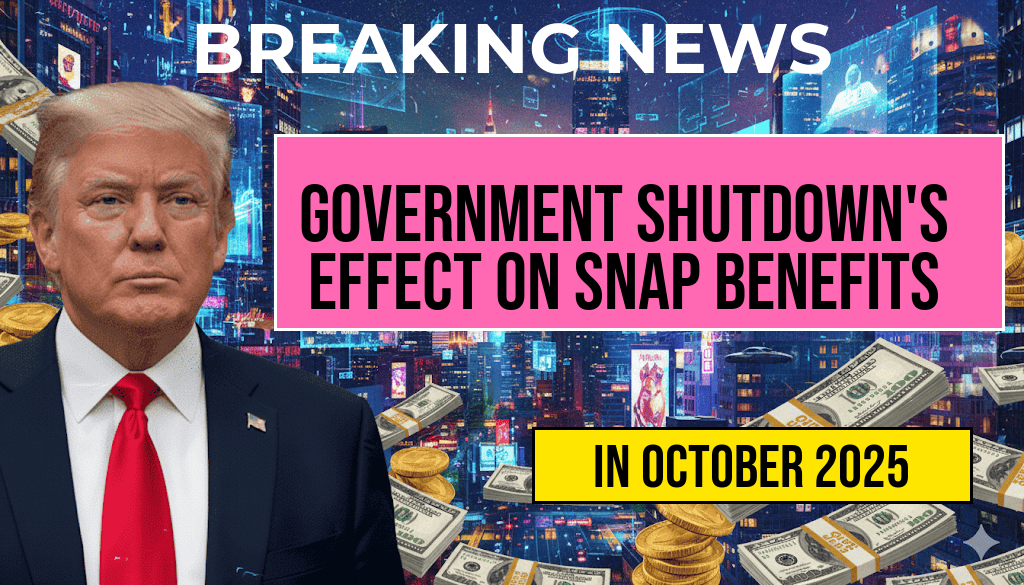The potential for a government shutdown raises significant concerns about the continuity of essential services, particularly for vulnerable populations relying on assistance programs like the Supplemental Nutrition Assistance Program (SNAP). As lawmakers grapple with budgetary disagreements, millions of Americans are left wondering how a shutdown could affect their access to food stamps. The U.S. Department of Agriculture (USDA), which administers SNAP, has issued guidance on the implications of a lapse in government funding, outlining what beneficiaries can expect in the coming weeks.
Understanding SNAP Benefits
SNAP, formerly known as food stamps, provides crucial support to low-income households, enabling them to purchase food. As of 2023, approximately 42 million Americans participate in the program, with benefits determined by household size and income level. The program is funded through federal allocations, making it sensitive to government funding levels.
What Happens During a Government Shutdown?
A government shutdown occurs when Congress fails to pass appropriations bills or continuing resolutions to fund government operations. During this time, certain government services are halted, while others may continue operating without interruption. The impact on SNAP can vary depending on the duration of the shutdown and the decisions made by federal agencies.
Immediate Effects on SNAP
- Funding Availability: In the event of a shutdown, SNAP benefits for the month may still be funded if appropriations were already allocated. However, if the shutdown lasts beyond the current funding cycle, future benefits could be jeopardized.
- Disbursement Delays: Beneficiaries may experience delays in receiving their monthly benefits. While some states may have sufficient reserves to continue disbursements, others may not.
- Eligibility and Enrollment: New applications and eligibility reviews might face delays, impacting individuals seeking to enroll in the program during the shutdown.
Long-term Implications
If a government shutdown persists for an extended period, the ramifications for SNAP could become more severe. The USDA has indicated that while current beneficiaries may receive their benefits for a limited time, ongoing funding issues could lead to reduced benefits or temporary suspension of the program. This situation would disproportionately affect low-income families, seniors, and individuals with disabilities who rely on these benefits for their basic nutritional needs.
State Responses and Contingency Plans
State agencies play a critical role in administering SNAP. During a shutdown, states may implement contingency plans to manage the distribution of benefits. Some states have already begun preparing for potential disruptions by exploring alternative funding sources or adjusting their operational protocols.
What States Are Doing
- Emergency Funds: Some states have set aside emergency funds to cover SNAP benefits if federal funding is interrupted.
- Public Communication: State agencies are encouraged to communicate transparently with beneficiaries about potential changes and what they can expect regarding their benefits.
- Collaboration with Nonprofits: Many states are working with local food banks and nonprofit organizations to ensure that assistance remains available to those in need.
Future of SNAP Amid Budget Debates
The future of SNAP benefits is intricately linked to broader budgetary debates in Congress. Lawmakers are under increasing pressure to reach a consensus on funding, especially as the stakes involve the well-being of millions of families. Advocates for low-income populations are urging Congress to prioritize SNAP funding, emphasizing its role in combating food insecurity.
Advocacy and Support
Organizations such as the Feeding America and the No Kid Hungry campaign are mobilizing support for SNAP, highlighting the importance of sustaining these benefits. These groups are also working to provide resources and information to families affected by the potential shutdown.
Conclusion
As the threat of a government shutdown looms, the implications for SNAP benefits are becoming increasingly clear. While current beneficiaries may see minimal immediate disruption, the longer the shutdown persists, the greater the risk to food assistance programs. It is crucial for beneficiaries to stay informed about their state’s plans and for lawmakers to prioritize sustainable funding for SNAP to ensure that no one goes hungry during these uncertain times.
Frequently Asked Questions
What will happen to SNAP benefits during a government shutdown?
During a government shutdown, SNAP benefits may continue to be funded temporarily, but future payments could be impacted if the shutdown extends. It’s essential to stay informed about any announcements from the government regarding food assistance programs.
Will food stamps be available for new applicants during the shutdown?
New applicants may face delays in processing their food stamp applications due to reduced staffing and resources during a government shutdown. It’s advisable to apply as soon as possible and check for updates on the status of your application.
How will a government shutdown affect SNAP benefits distribution?
If a government shutdown occurs, the distribution of SNAP benefits might be delayed, which could affect when recipients receive their monthly payments. It’s important for recipients to plan ahead and budget accordingly.
Can I still use my food stamps during the shutdown?
Yes, you can generally still use your food stamps during a government shutdown, as existing benefits should remain valid. However, keep an eye on any updates that might affect program operations.
What should I do if I encounter issues with my SNAP benefits during a shutdown?
If you encounter issues with your SNAP benefits during a shutdown, contact your local SNAP office or visit their website for guidance. They can provide information on available resources and next steps.

Leave a Reply